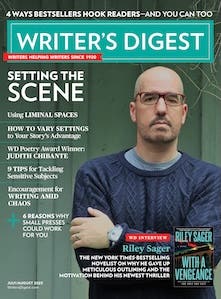Hair Trigger
Columbia’s Story Workshop Method avoids direct critique and instead we are asked to look at what’s working in a piece. I’ve found this method to be hugely beneficial for both…
Columbia’s Story Workshop Method avoids direct critique and instead we are asked to look at what’s working in a piece. I’ve found this method to be hugely beneficial for both my own writing and my teaching of writing to my high school students—focus on the positives, and ask specific questions about the writer’s choices rather than ripping to shreds the aspects of the story that don’t work.
But this semester, I’m taking a class where we have to sort through 2,000 manuscripts from the previous year’s workshops and, as student editors, whittle the stack down to 35 pieces to be included in Hair Trigger, Columbia’s literary anthology.
This is going to require some straight talk.
The way Hair Trigger works is that, at the end of the year, each professor turns in a folder from their workshops containing all the manuscripts they feel are strong enough to deserve consideration in the anthology. Our job is to then sift through these folders, weed out the weakest pieces, and then argue about the merits of the rest. The key is to remain totally objective and respectful of each piece: just like in our workshops, we’re not allowed to talk about what we did and didn’t like, but rather, what did or didn’t work. For example, you couldn’t say you “didn’t like the characters”, but instead you’d say that the characterization seemed flat. It’s not just semantics, but a way of taking a more clinical approach to something that is often very personal.
But despite these efforts at objectivity, writing is subjective, and so are one’s tastes. Adding to that conundrum is the fact that students’ names are on all of the manuscripts. We are asked to excuse ourselves from reading the folders that contain the work of our best friends or our significant others. And we’re obviously not allowed to read the folder from workshops in which we were students. If our own pieces are being put up for discussion, we’ll be asked to leave the room (and not put a solo cup up to our ears and lean against the closed door, straining to listen in). But that still doesn’t change the fact that we know the people whose work we accept or decline. What about all those other less obvious relationships and interactions that you forge over the course of a graduate program? You might not read for your best friend or your boyfriend, but what about the girl who rolled her eyes at something you said at a party last year? Or the classmate who kissed you one drunken night after a reading series? Or the quiet girl in your program who you don’t know very well, but whose writing you respect? Or the guy who stopped you in the hall after class last year and told you how beautiful the ending of your story was? These aren’t faceless people, names on a piece of paper. We know these people—we write with them, we learn with them, we talk with them, we drink with them. We have opinions about them. And now our job, if we do it with integrity, it to divorce ourselves from those opinions and focus only on what’s on the page.
I guess that’s why, during our first class, my professor made it very clear that any of our discussions in class were not to leave the room. What happens in room 1206 stays in room 1206. I can see now why that rule is an important one.
Jane Friedman is a full-time entrepreneur (since 2014) and has 20 years of experience in the publishing industry. She is the co-founder of The Hot Sheet, the essential publishing industry newsletter for authors, and is the former publisher of Writer’s Digest. In addition to being a columnist with Publishers Weekly and a professor with The Great Courses, Jane maintains an award-winning blog for writers at JaneFriedman.com. Jane’s newest book is The Business of Being a Writer (University of Chicago Press, 2018).


